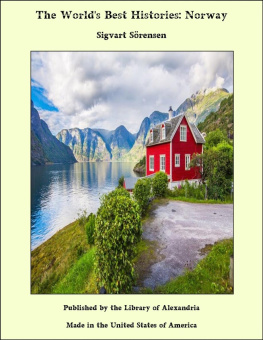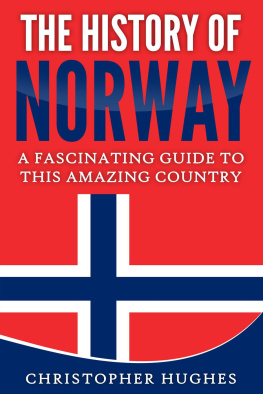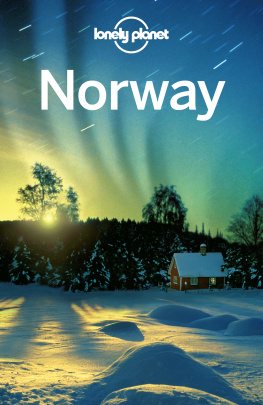WHO WERE THE NORSEMEN?
The Norsemen are a Germanic race, and belong, accordingly, to the Aryan family. Their next of kin are the Swedes and Danes. Their original home was Asia, and probably that part of Asia which the ancients called Bactria, near the sources of the rivers Oxus and Jaxartes. Not only the Norsemen are supposed to have come from this region, but the ancestors of all the Aryan nations which now inhabit the greater portion of the civilized world. Among the first to leave this cradle of nations were the tribes which settled upon the eastern islands and peninsulas of the Mediterranean, and, under the name of Hellenes, developed, long before the Christian era, an art and a literature which are, in some respects, yet unrivalled. The early Italic tribes, from which sprung in time the world-empire of Rome, trace their descent from the same ancestry; as do also the Kelts, who in ancient times inhabited England, Ireland, and France; the Slavs who settled in the present Russia, Bohemia, and the northern Turkish provinces; and the Germans, who occupied the great central regions of the European continent. Among Asiatic nations, the Iranians inhabiting Persia, and the Hindoos in India, have Aryan blood.
It seems almost incredible that persons differing so widely in appearance, habits, and disposition, as, for instance, a Hindoo and an Englishman, should, if you go sufficiently far back, have the same ancestry. And yet there cannot be the slightest doubt that such is the case. The question, then, naturally arises: "If they were once alike, what can have made them so different?" And the answer is: "The climate, the soil, and the general character of the countries in which they settled."
The country from which the first Aryans emigrated was mountainous, with fertile valleys, and an even, temperate climate. There was no excessive heat to make men drowsy and indolent, nor excessive cold to stunt them in their growth and paralyze their energies. The earth did not, as in the tropics, produce a luxurious vegetation which would support the inhabitants without labor, but it offered sustenance to herds of cattle which, with the proper care, would supply the simple needs of primitive men. The race, thus situated, progressed physically as well as mentally, until it became superior to all the tribes inhabiting the neighboring regions. War followed, in which the weaker succumbed. The Aryans, increasing rapidly in numbers, took possession of the conquered territories, enslaved the indigenous population, or drove it back into locali ties where the conditions of life were less favorable. It is not positively known when the first migration on a large scale took place; but some scholars have supposed that the Hindoos separated from the parent race as early as 1500 B.C. The dates of the Greek, Italic, Keltic, and Slavic migrations are likewise uncertain, and the period which has been fixed upon for the Aryan occupation of Germany is also conjectural. The same uncertainty prevails regarding the earliest history of the Scandinavian tribes; although there is a strong probability that their invasion of the countries which they now inhabit must have taken place during the second century preceding the Christian era. It is not unlikely that they left their Asiatic home simultaneously with the Germans, with whom they were then almost, if not entirely, identical, and that their conquering hordes spread northward, subduing the Finns and Lapps, whom they found in possession of the land, partly exterminating them, partly forcing them up into the barren mountains of the extreme North. Among the tribes whose path of conquest was turned in this direction, the Goths ( Gauter), the Swedes (Svear), and the Danes (Daner) were the most prominent, though several other names are mentioned, both by native and foreign authors. The name Norseman, or Northman, is not found among these, because it refers not to any of the Aryan tribes, but is solely derived from the country in which they settled. Their country soon became known as Norway (Noregr or Norvegr), i. e., the Northern Way. It is the long strip of territory extending north and south between the mountain chain Kjlen, which separates it from Sweden and the Arctic and Atlantic oceans. It looks on the map like a big bag slung across the shoulders of Sweden.
It is a wonderful countrythis land of the Norsemen. The ocean roars along its rock-bound coast, and during the long, dark winter the storms howl and rage, and hurl the waves in white showers of spray against the sky. Great swarms of sea-birds drift like snow over the waters, and circle screaming around the lonely cliffs. The aurora borealis flashes like a huge shining fan over the northern heavens, and the stars glitter with a keen frosty splendor. But in the summer all this is changed, suddenly, as by a miracle. Then the sun shines warmly, even within the polar circle; innumerable wild flowers sprout forth, the swelling rivers dance singing to the sea, and the birches mingle their light-green foliage with the darker needles of the pines. In the northern districts it is light throughout the night, even during the few hours while the sun dips beneath the horizon; the ocean spreads like a great burnished mirror under the cloudless sky, the fishes leap, and the gulls and eider-ducks rock tranquilly upon the shining waters. All along the coast there are excellent harbors, which are free of ice both winter and summer. A multitude of islands, some rocky and barren, others covered with a scant growth of grass and trees, afford hiding-places for ships and pasturage for cattle. Moreover, long arms of the oceanthe so-called fiordspenetrate far into the country, and being filled with water from the gulf-stream which strikes the western coast of Norway, tend greatly to moderate the climate. About the shores of these fiords narrow strips of arable land stretch themselves, with many interruptions, along the edge of the water, and here the early Germanic settlers built their houses and began their fight for existence. Behind them and before them the great snow-hooded mountains rose threateningly, sending down upon them avalanches, floods, and sudden whirlwinds. But, nothing daunted, they clung to the soil, explored the land and the sea, and selected the most favorable sites for their permanent dwellings.
It is tolerably certain that the Aryan settlers in Norway knew at that time very little of agriculture, but made their living by hunting, fishing, and cattle-raising. The huts which they built of logs were rude contrivances which could be easily torn down and moved. But, as at a very early period, they began to devote themselves more to the culture of the ground, their dwellings were made larger, and were built with greater care. When a horde of warriors invaded a valley their first task was to clear away the forests which grew dense and dark up over the mountain sides. Their chieftain then built a hov or temple for the gods, where sacrifices were made at certain stated times. Whether it was the chieftain's task to allot to each his share of land, or whether each one chose according to his own preference, is not known, but the former is the more probable; for the Norsemen, proud and pugnacious as they were, subordinated themselves, in historic times, readily to their local chiefs, and accorded them great honor. This sense of kinship within the tribe and willing recognition of authority was the more important in Norway, because the character of the ground there compelled the people to live far apart on scattered









